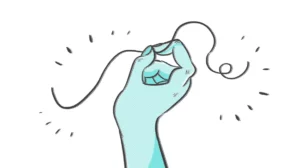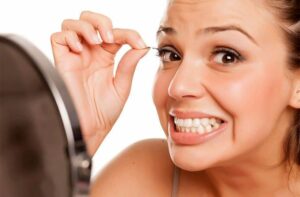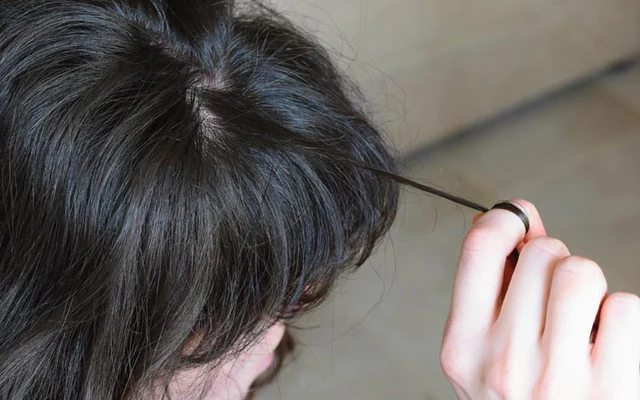Do you suffer from OCD or trichotillomania? Are you looking for the best treatment options available? If so, you have come to the right place. In this blog post, we will discuss the different OCD Trichotillomania treatment options available. And also provide some tips to manage OCD trichotillomania on your own!
Contents
Understanding OCD Trichotillomania
 Before we got into the treatment options for OCD and trichotillomania, it is important to understand the condition more. Obsessive-compulsive disorder (OCD) is an anxiety disorder that consists of two parts: obsessions and compulsions. Obsessions are unwanted, intrusive thoughts, images, or urges that cause distress and anxiety. Compulsions are behaviors that a person engages in to reduce the distress caused by obsessions.
Before we got into the treatment options for OCD and trichotillomania, it is important to understand the condition more. Obsessive-compulsive disorder (OCD) is an anxiety disorder that consists of two parts: obsessions and compulsions. Obsessions are unwanted, intrusive thoughts, images, or urges that cause distress and anxiety. Compulsions are behaviors that a person engages in to reduce the distress caused by obsessions.
On the other hand, trichotillomania is a type of impulse control disorder characterized by the compulsive urge to pull out one’s own hair. Usually from the scalp, eyebrows, or eyelashes. People with trichotillomania are unable to resist the urge to pull out their hair. And often feel an intense sense of relief when they do so.
Both OCD and trichotillomania can have a huge impact on someone’s life, making it difficult for them to function normally. Symptoms of both conditions include:
- Avoidance behaviors and rituals
- Difficulty concentrating
- Feelings of guilt or shame associated with the behavior
- Feeling overwhelmed by intrusive thoughts or urges
Therefore, if you are experiencing any of these symptoms, it is important to seek help from a mental health professional. Doing so can help you get the treatment and support you need to manage your condition.
Can You Have OCD And Trichotillomania?
Yes, it is possible to have both OCD and trichotillomania. The reason they often co-occur is that they are both related to anxiety and obsessive thoughts. OCD is marked by persistent, intrusive, and unwanted thoughts or urges (obsessions) that cause distress or anxiety. Trichotillomania is characterized by an overwhelming urge to pull one’s hair out from the scalp, eyebrows, eyelashes, and other areas of the body.
Both OCD and trichotillomania can cause sufferers to feel anxious, depressed, and ashamed of their behaviors. In addition, the comorbid condition can interfere with daily activities, such as going to school or work. And create significant distress in relationships.
According to studies, roughly 20-30% of people with OCD also have trichotillomania and vice versa. Thus, it is important to find OCD trichotillomania treatment that is tailored to the individual’s needs. If you think that you might have both OCD and trichotillomania, it is best to seek professional help from a mental health provider as soon as possible.
What Are Some OCD Trichotillomania Treatment Options?
 As we understood that both conditions can co-occur and causes distress to the sufferer, there are a variety of treatment options available for those affected. The most effective OCD trichotillomania treatment options are listed below:
As we understood that both conditions can co-occur and causes distress to the sufferer, there are a variety of treatment options available for those affected. The most effective OCD trichotillomania treatment options are listed below:
Habit-Reversal Training
HRT is often used to help individuals with trichotillomania. It helps the individual identify the signs that indicate they are about to pull their hair, such as feeling an urge or tension in certain areas. They will then learn ways of stopping themselves from engaging in these behaviors and develop healthier coping skills and responses.
Cognitive Behavioral Therapy
CBT is another form of treatment that can be used in conjunction with HRT. It helps individuals change their thought patterns and behaviors to help them better manage their symptoms. As well as learn more effective ways to handle stress or difficult emotions. For example, CBT works to help individuals recognize and correct any inaccurate beliefs about their hair pulling, or to see the behavior in a more positive light.
Exposure Response and Prevention
In many cases, ERP is used to treat trichotillomania. The goal is to expose individuals to the urge of pulling, but not actually engage in the act. This can be done through gradually increasing exposure and then using relaxation techniques or other strategies to resist the urge. Let’s assume that the individual is exposed to a hair-pulling trigger and they do not engage in the behavior, then they will be rewarded for their restraint. Over time, this will help them resist all urges to pull their hair.
Medications
Various medications can be used to treat both OCD and trichotillomania, although it is important that individuals consult with their doctor to determine which type of medication is best for them. For example, antidepressants such as fluoxetine, sertraline, or paroxetine can help reduce the urges and compulsions associated with OCD. As well as drugs such as N-acetylcysteine which helps to reduce the intensity of trichotillomania symptoms.
Mindfulness Training
It is important to note that mindfulness training is an additional tool that can be used to help individuals with OCD and trichotillomania. It teaches them relaxation techniques, such as meditation and breathing exercises, which can help reduce the urge to engage in compulsive behaviors. Additionally, it helps people become more aware of their thoughts and feelings, encouraging them to accept and observe them without judgment. This, in turn, can help to reduce anxiety associated with the disorder.
Overall, these are the top 5 OCD trichotillomania treatment options that are used to treat both conditions. It is important that individuals discuss their needs and preferences with a doctor before starting any treatment plan. With the right treatment, individuals can learn to manage their symptoms and live happier, more fulfilled life.
Can You Manage OCD And Trichotillomania At Home?
Yes, you can manage OCD and Trichotillomania at home. There are a variety of strategies that you can implement in order to reduce the symptoms associated with both disorders. Here are a few tips that can help you manage OCD and Trichotillomania:
- Learn stress-management techniques such as deep breathing, progressive muscle relaxation, and guided imagery. These strategies can help you reduce the obsessive thoughts that often accompany OCD and Trichotillomania.
- Develop a distraction technique to refocus your attention away from obsessive thoughts or the urge to pull your hair. Examples of distractions may include reading a book, taking a walk, talking with a friend, or listening to music.
- Identify and address any underlying issues that may be contributing to your disorder such as anxiety or depression. Talking to a mental health professional can help you address these issues and develop strategies for managing them.
- Develop an understanding of your triggers and be prepared to face them. Identifying what situations, people, or events are likely to trigger your symptoms can help you better manage the disorder.
- A healthy lifestyle can also help manage OCD and Trichotillomania. Eating a balanced diet, exercising regularly, and getting enough sleep can help reduce stress levels and minimize symptoms.
- Stay connected to family, friends, and your loved ones in order to reduce feelings of isolation and loneliness.
- Keep a journal or diary to document your progress and successes in managing the disorder. This can be a helpful tool for identifying successful strategies as well as any triggers that may have caused a setback.
By utilizing these strategies, you can successfully manage OCD and Trichotillomania at home and live a fulfilling life. It is important to remember that it will take time and dedication however the results are worth the effort.
If your symptoms become too difficult to manage on your own, reach out to a mental health professional for help. They can provide additional support, guidance, and resources to help you cope with the disorder. Seek support today and start on the path to a healthier life.
Why Is Trichotillomania Difficult To Treat?
 Well, trichotillomania is a difficult disorder to treat because it involves both physiological and psychological components. Treatments that address the underlying cause of trichotillomania, such as cognitive behavioral therapy (CBT) or habit reversal training, are often successful in reducing symptoms.
Well, trichotillomania is a difficult disorder to treat because it involves both physiological and psychological components. Treatments that address the underlying cause of trichotillomania, such as cognitive behavioral therapy (CBT) or habit reversal training, are often successful in reducing symptoms.
Because the pulling and picking seem to serve a purpose for the person, such as relieving stress or providing a sense of control. That is why it is difficult to break these habits without addressing the underlying psychological issues. Additionally, trichotillomania can become complex when combined with other disorders, such as OCD.
However, with the right treatment, trichotillomania can be managed effectively. And people suffering from this disorder may find relief. It is important to work with a mental health professional experienced in treating trichotillomania to ensure that the treatment is tailored to the individual’s needs and goals.
Conclusion
To conclude, OCD trichotillomania treatment may seem like a difficult challenge, but it is essential for those who suffer from this condition to seek help. While medication and therapy can be extremely beneficial, alternative strategies. Such as relaxation techniques and lifestyle changes can also be helpful in managing the disorder.
It is important to remember that everyone’s experience with OCD trichotillomania is different and that treatment may vary from person to person. The key is to find a plan that works for you and stick with it – whether it’s medication, therapy, or lifestyle changes. That will help in achieving long-term success.
Take care, and don’t forget that you are not alone! OCD is a mental health disorder characterized by obsessions and compulsions. If you have any queries regarding OCD treatment, ERP therapy experienced therapists at OCDMantra can help: Book a trial OCD therapy session


